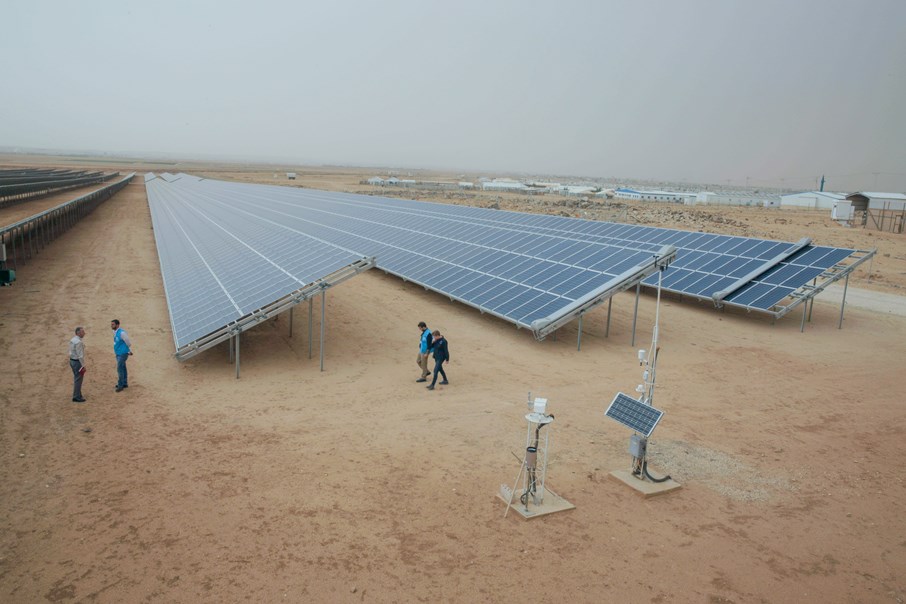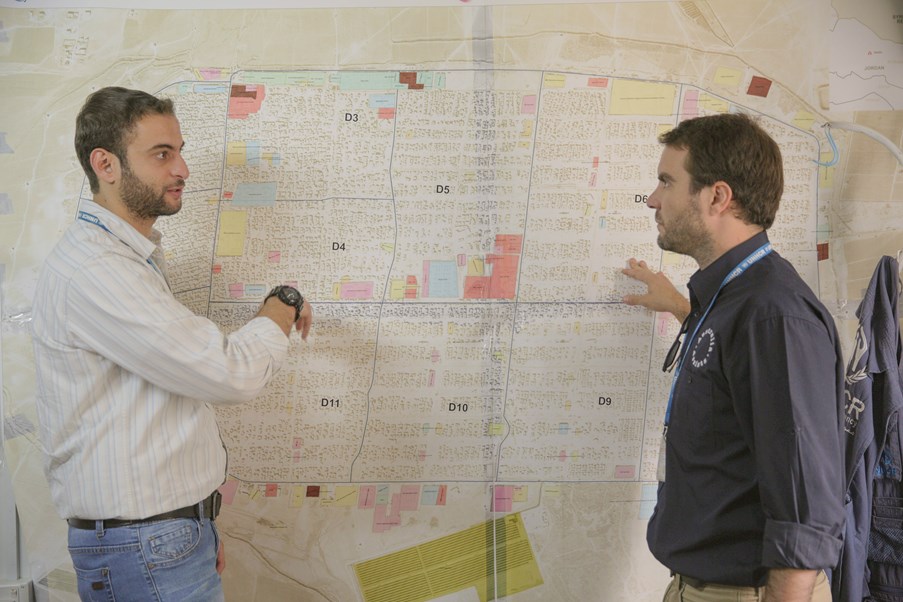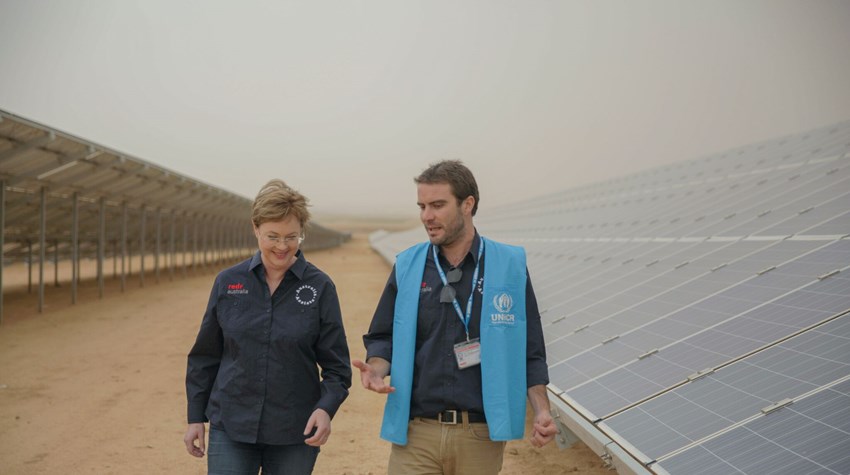The plants are providing refugee families with increased access to electricity, which Robert says is thanks to a team of skilled Jordanian engineers who have worked hard to develop the electrical network of the camp for the past four years.
“These are the first two camps in the world with renewable energy so there’s a lot of learning that we want to take away to leverage new funds, and also develop road maps for other UNHCR initiatives,” Robert explains.
“It’s an exciting project to be working on because UNHCR is paying about 20 per cent of what they were paying previously with their electricity bills. Through the use of renewable energy and innovations in this space, there’s opportunities to use some of this money saved in other life-saving initiatives.”

The Za'atari plant is the largest solar plant in a refugee camp in the world. Photo: Hiba Judeh, RedR Australia
The Za’atari plant, funded by the Government of Germany through the KfW Development Bank, consists of 40,000 solar panels arranged in rows hundreds of metres long. Covering an area the size of about 33 soccer pitches, it has gained the title of the largest solar plant built in a refugee camp in the world.
The plant provides free and sustainable power to the 80,000 Syrian refugees living in Za’atari, giving families between 12 and 14 hours of electricity access per day. High costs of powering the camps meant that previously, electricity use in refugee shelters was rationed to between only six to eight hours.
Extended electricity allows the lighting of shelters and streets to be enhanced, giving children longer hours for homework and increased safety at night. Refrigerated foods can also be better stored, and hygiene can be better maintained.

Robert has worked alongside UNHCR Electrical Engineer Yanal Madanat, as well as many other skilled Jordanian engineers. Photo: Hiba Judeh, RedR Australia
A key part of Robert’s work has been the evaluation of the impact of this increased electricity access.
“Within the scope of my monitoring and evaluation outputs, there’s going to be a range of participatory impact assessments, focus groups and surveys in the field looking at how electricity impacts different people’s lives,” Robert said.
“We’re working with male, female, boys and girls groups, and also with vulnerable groups, including people with disabilities, to see how electricity in the camps – whether it’s in the public space or in homes – impacts their protection, health, security and nutrition outcomes.”
Although most of the electricity generated by the plant is used to power refugees’ shelters, the plant also feeds back any unused power into Jordan’s national grid, supporting the energy needs of the local community and helping the country meet its renewable energy goals.
Robert says that through the support of the Australia Assists program, himself and others working on the project are able to harness key learnings that can be drawn upon when implementing similar projects hereafter.
“Traditionally in humanitarian contexts, you don’t necessarily have a lot of scope to do lessons learnt to see what we’ve done in the past and improve in the future.”
“With this innovation around renewables, through Australia Assists and RedR, we’ve got an opportunity to actually capitalise on all of this learning so as UNHCR can be more effective when implementing these initiatives elsewhere in the future.”



